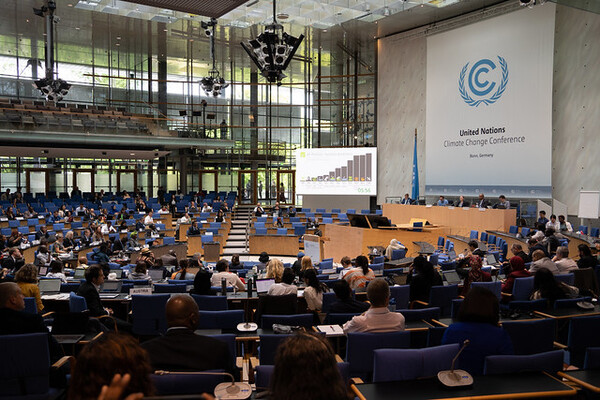
The world is facing a common problem, as the climate crisis increasingly leads to catastrophes across the globe. Deadly floods, wildfires, droughts, and prolonged heatwaves in numerous regions highlight an unfolding global emergency that demands immediate action. As global temperatures rise and greenhouse gas emissions continue, climate-related disasters are growing in both frequency and severity. Prolonged droughts disrupt agriculture and water supplies, leading to food and water insecurity. Floods force evacuations and strain urban infrastructures, while wildfires damage biodiversity and release massive amounts of carbon back into the atmosphere.
As the costs mount, governments worldwide are pressured to invest in both mitigation and adaptation to reduce greenhouse gas emissions and build resilience against exacerbating disasters. While some countries are prioritizing prevention and building resilience, others remain caught in cycles of reactive measures and political disputes. In this article, the Chonnam Tribune examines how different countries take measures to survive the climate crisis.
Balancing Urgency and Ambition
Southern European countries such as Spain, Italy, Croatia, and France, where extreme heat has fueled large wildfires and caused multiple deaths, appear to be particularly vulnerable to the effects of climate change. The Guardian reported on Aug. 13 that heatwaves are driving these disasters, while the European Union has expanded its Civil Protection Mechanism to coordinate disaster relief across member states. At the same time, the European Commission’s European Green Deal sets the ambitious goal of achieving climate neutrality by 2050. The European Parliament has also called for phasing out fossil fuel subsidies and redirecting resources toward renewable energy and adaptation. These measures reflect Europe’s intent to pair disaster management with long-term decarbonization, though the challenge lies in balancing urgent disaster responses with the slower transition away from fossil fuels.
The Middle East faces an equally serious set of climate pressures, including desertification, water shortages, and extreme heat. In December 2024, The Financial Times reported that Saudi Arabia launched the Saudi Green Initiative and the Middle East Green Initiative, pledging billions to restore degraded land and combat desertification. Iraq has also begun a Green Climate Fund–supported project worth 39 million dollars to help rural households, according to the Italian Institute for International Political Studies. Yet, despite these efforts, weak state capacity, dependence on oil, and widespread corruption continue to undermine the region’s ability to respond effectively to climate risks.
Struggling for Climate Resilience
Climate challenges are evident in the Philippines, one of the most climate-vulnerable nations in the world. The country faces regular typhoons, floods, and droughts, and has expanded its National Disaster Risk Reduction and Management Plan to strengthen preparedness. According to Relief Web, improvements in early warning systems and community-based evacuation protocols have helped save lives, yet the system is still underfunded. The World Bank also noted that long-term adaptation measures, such as relocating high-risk communities and reinforcing climate-resilient infrastructure, remain slow because of financial limits and political instability. As a result, the Philippines remains caught in a cycle of disaster response, with limited progress toward deeper resilience.
South Korea began reassessing its climate disaster policies after record-breaking floods in July 2025. According to The Korea Times, in a news article published on July 29, the Ministry of the Interior and Safety reported at least 23 deaths, thousands of damaged properties and vehicles, and nearly 14,000 temporary evacuations. While the country has strong technological capacity to develop advanced warning systems and infrastructure, transforming this capacity into effective, long-term resilience strategies remains a challenge. Experts explained that the country needs more stormwater retention facilities for rainwater capture. These facilities can serve as parks or parking areas during dry periods but switch to retention basins during storms.
Climate Crisis Requires Global Solidarity
While each country strives to combat the climate crisis within its capacity, international organizations play crucial roles in facilitating cooperation and accountability. According to the official website of the United Nations Framework Convention on Climate Change, the Paris Agreement continues to provide the framework for reducing global emissions, while the Intergovernmental Panel on Climate Change supplies the scientific assessments necessary for policymaking. Additionally, the World Health Organization continues its efforts to build more climate-resilient and sustainable health systems, while also highlighting the health impacts of climate disasters, from heat-related illnesses to waterborne diseases after floods.
As climate disasters intensify, the world’s response remains uneven. Building resilient societies demands structural changes, governance reforms, and international solidarity to ensure that preparedness keeps pace with the escalating climate crisis. Without such efforts, the cycle of catastrophe and recovery will only deepen, leaving nations perpetually vulnerable to the next disaster.
By Antiquando Daniela, Reporter

